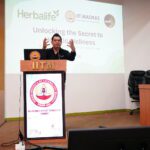Consideration for public health and social measures in the workplace in the context of COVID-19
India
healthysoch
New Delhi, June 26, 2020 :
COVID-19 spreads primarily through respiratory droplets or contact with contaminated surfaces. Exposure can occur at the workplace, while travelling to work, during work-related travel to an area with local community transmission, as well as on the way to and from the workplace.
The risk of exposure to COVID-19 in the workplace depends on the likelihood of coming within 1 metre of others, in having frequent physical contact with people who may be infected with COVID-19, and through contact with contaminated surfaces and objects.
Managers with the support of an occupational health and safety advisor should carry out rapid risk assessments to determine the possibility of exposure risk in order to put in place preventive measures. This should be done for each specific work setting and each job.
Low exposure risk
Jobs or work without frequent, close contact with the general public or others. Workers in this group have minimal occupational contact with the public and other co-workers. Examples of such jobs may include remote workers (i.e., working from home), office workers without frequent close contact with others and workers providing teleservices.
Medium exposure risk
Jobs or tasks with close, frequent contact with the general public or others. This risk level may apply to workers who have frequent and close contact with the people in high-population-density work environments (e.g. food markets, bus stations, public transport, and other work activities where physical distancing of at least 1 metre may be difficult to observe), or tasks that require close and frequent contact between co-workers. This may also include frequent contact with people returning from areas with community transmission. Examples of such jobs may include frontline workers in retail, home deliveries, accommodation, construction, police and security, public transport, and water and sanitation.
High exposure risk
Jobs or tasks with close contact with people who may be more likely to have COVID-19, as well as contact with objects and surfaces possibly contaminated with the virus. Examples include transporting people known or suspected to have COVID-19 without separation between the driver and the passenger, providing domestic services or home care for people with COVID-19, and having contact with the deceased who were known or suspected of having COVID-19 at the time of their death. Jobs that may fall under this category include domestic workers, social care workers, personal transport and home delivery providers and home repair technicians (plumbers, electricians) who have to provide services in the homes of people with COVID-19.
Employers and managers, in consultation with workers, should carry out and regularly update the risk assessment for work-related exposure to COVID-19, preferably with the support of occupational health services.
For each risk assessment, consider the environment, the task, the threat, resources available, such as personal protective equipment, and the feasibility of protective measures. The risk assessment should also extend to collective accommodation provided by the employer for workers, such as dormitories. Essential public services, such as security and police, food retail, accommodation, public transport, deliveries, water and sanitation, and other frontline workers may be at an increased risk of exposure to occupational hazards for health and safety. Workers who may be at higher risk of developing severe COVID-19 illness because of age or pre-existing medical conditions should be considered in the risk assessment for individuals.
healthysoch







